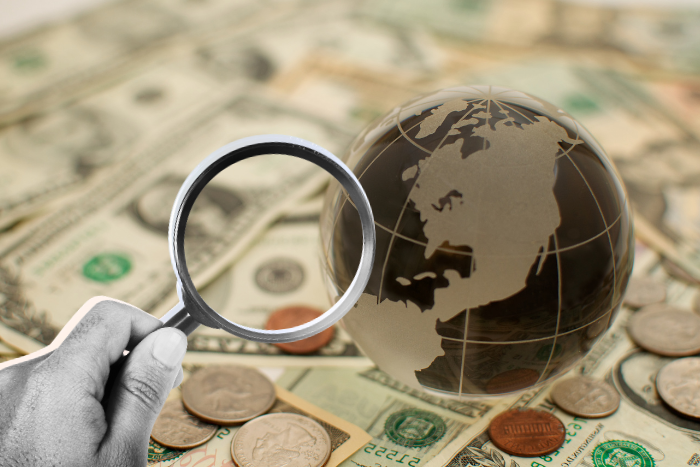The Bank claimed to have delivered about $42.6 billion in climate finance in fiscal year 2024 but poor record-keeping practices cast clouds of doubt over the climate funds disbursed in the past seven years
Last month, the World Bank claimed to have delivered a “record $42.6 billion in climate finance” in fiscal year 2024—which covers July 1, 2023 to June 30, 2024. The statement said that the amount was a 10% increase in climate finance compared to the previous year. It also said that the money is supporting efforts “to end poverty on a livable planet, investing in cleaner energy, more resilient communities, and stronger economies.”
However, a new Oxfam report has found that up to $41 billion in World Bank climate finance in the past seven years is unaccounted for due to poor record-keeping practices. This amount is almost equivalent to the climate finance the Bank claimed to have delivered in 2024 and is nearly 40% of all climate funds disbursed by the Bank over the past seven years.
An audit of the World Bank’s 2017-2023 climate finance portfolio found that between $24 billion and $41 billion in climate finance went unaccounted for between the time projects were approved and when they closed.
The report said that the World Bank is the largest multilateral provider of climate finance, accounting for 52% of the total flow from all multilateral development banks combined in 2022. The report comes days before the World Bank and IMF Annual Meetings in Washington D.C. and a few weeks before COP29—where climate finance is going to be one of key issues on the agenda.
No tracks found
The World Bank’s published climate finance data includes only ex ante figures— the amount of climate finance a project is determined to include based on an assessment of the project before it is approved. The Bank does not conduct ex post analyses of projects to report on the actual amount of climate finance delivered. With this level of information, the report said, it was impossible to determine whether the Bank is truly stepping up its climate investments.
There is no clear public record showing where this money went or how it was used, which makes any assessment of its impacts impossible. It also remains unclear whether these funds were even spent on climate-related initiatives intended to help low- and middle-income countries protect people from the impacts of the climate crisis and invest in clean energy.
According to the report, since there is no transparent public record of where this money went or how it was spent, any evaluation of its effects is impossible. Furthermore, it’s still unclear if this money was actually used for climate-related projects that aimed to assist low- and middle-income nations in investing in clean energy and safeguarding their citizens from the effects of the climate catastrophe.
“Climate finance is scarce, and yes, we know it’s hard to deliver. But not tracking how or where the money actually gets spent? That’s not just some bureaucratic oversight —it’s a fundamental breach of trust that risks derailing the progress we need to make at COP this year. The Bank needs to act like our future depends on tackling the climate crisis, because it does,” said Kate Donald, head of Oxfam International’s Washington D.C. office.
The inquiry also showed how difficult and time-consuming it was to find even the most basic facts about the World Bank’s use of climate finance. According to the researchers, they had to sort through several levels of complex and incomplete reports. They said that there were still several gaps and anomalies in the data.
“The fact that this information is so hard to access and understand is alarming —it shouldn’t take a team of professional researchers to figure out how billions of dollars meant for climate action are being spent. This should be transparent and accessible to everyone, most importantly communities who are meant to benefit from climate finance,” added Donald.
Climate finance at COP29
The issue of climate finance will take centre stage at this year’s COP in Azerbaijan, where countries are set to negotiate a new global climate finance goal, the New Collective Quantified Goal (NCQG). Climate activists are demanding the Global North provide at least $5 trillion a year in public finance to the Global South “as a down payment towards their climate debt” to the countries, people and communities of the Global South who are the least responsible for climate breakdown but are the most affected.
The report warned that the lack of traceable spending could undermine trust in global climate finance efforts at this critical juncture.
The report recommended that the Bank should create a public climate finance database that includes sufficient metadata that is searchable, downloadable, and machine readable. This database should be updated at the time a project, including all associated projects, reaches the closing stage and should disclose actual climate finance expenditures compared with planned expenditures.
About The Author
You may also like
COP30 ends in chaos and compromise
India commits to revised NDC, shifts pressure back to rich nations to deliver on climate finance at COP30
Tripling adaptation finance may be the only way to secure a win at COP30: Experts
India’s stance at COP30: No new commitments without real finance
New report recasts Global South as climate finance investor, not recipient

